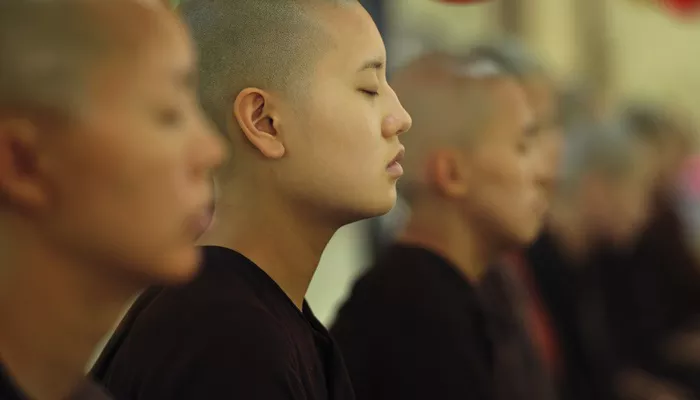Buddhism, founded by Siddhartha Gautama (Buddha) in ancient India, has spread across the globe, shaping cultures, traditions, and societies. This article explores Buddhist-majority countries, their unique practices, cultural impacts, and contributions to global spirituality. While exact numbers vary, approximately 7% of the world’s population identifies as Buddhist, with concentrations in Asia and growing interest in the West.
Major Buddhist Countries
1. Thailand
Thailand is a Theravada Buddhist stronghold, with over 95% of its population practicing Buddhism. Monasteries (wats) are central to daily life, offering education, community support, and spiritual guidance. The Tourism Authority of Thailand highlights iconic sites like the Grand Palace and Wat Phra Kaew. Buddhist festivals such as Songkran (Water Festival) and Visakha Bucha attract millions of visitors annually.
2. Myanmar
Myanmar, with 87.9% Buddhists, is renowned for its ancient temples and pagodas. The Shwedagon Pagoda in Yangon and Bagan’s temple complex are UNESCO World Heritage sites. Monastic education is widespread, with boys often ordained as novice monks. Despite political challenges, Buddhism remains a unifying force in Myanmar’s society.
3. Cambodia
Cambodia, where 96.9% are Buddhists, is home to the world-famous Angkor Wat. This ancient temple, once a Hindu shrine, later became a Buddhist pilgrimage site. The UNESCO-listed Angkor complex reflects the country’s rich religious history. Buddhist traditions deeply influence daily life, including festivals like Pchum Ben (Ancestor Day).
4. Sri Lanka
Sri Lanka, with 70.2% Buddhists, is a Theravada Buddhist heartland. The Temple of the Tooth Relic in Kandy and the ancient city of Anuradhapura are sacred sites. The Sri Lanka Tourism promotes cultural and religious tourism, including the annual Esala Perahera festival.
5. Laos
Laos, where 66% are Buddhists, blends Theravada Buddhism with animist traditions. The Pha That Luang stupa in Vientiane symbolizes national identity. Monks play a vital role in rural communities, providing education and spiritual support.
6. Bhutan
Bhutan, a Vajrayana Buddhist nation, emphasizes Gross National Happiness (GNH) over GDP. Buddhism is integrated into governance and daily life, with monasteries like Paro Taktsang (Tiger’s Nest) attracting global attention. The Bhutan Tourism Board promotes sustainable tourism to preserve cultural heritage.
7. Japan
Japan, with 36.2% Buddhists, combines Mahayana and Shinto traditions. Temples like Kyoto’s Kiyomizu-dera and Nara’s Todai-ji showcase architectural and artistic excellence. Zen Buddhism influences tea ceremonies, martial arts, and minimalist aesthetics.
8. Mongolia
Mongolia, where 55.1% are Buddhists, follows Tibetan Vajrayana traditions. Erdene Zuu Monastery, one of the oldest in Mongolia, and the Gandantegchinlen Monastery in Ulaanbaatar are significant religious sites. Nomadic traditions and Buddhist rituals coexist in this vast steppe nation.
9. China
China, with 18.2% Buddhists, is home to diverse traditions: Han Chinese Buddhism, Tibetan Buddhism, and Theravada in Yunnan. UNESCO sites like the Mogao Grottoes and Mount Wutai attract pilgrims and tourists. Government policies balance religious freedom with cultural preservation.
10. Vietnam
Vietnam, with 16.4% Buddhists, practices Mahayana Buddhism influenced by Confucianism and Taoism. Hanoi’s Temple of Literature and Hue’s Thien Mu Pagoda reflect this cultural blend. Pilgrimages to sacred mountains and festivals like Tet Nguyen Dan are integral to Vietnamese life.
Buddhist Schools and Practices
Theravada Buddhism
Theravada (“Doctrine of the Elders”) is dominant in Southeast Asia. It emphasizes monastic life, meditation, and the Pali Canon. Key practices include daily alms rounds, vipassana meditation, and adherence to strict monastic rules.
Mahayana Buddhism
Mahayana (“Great Vehicle”) prevails in East Asia, focusing on compassion (bodhicitta) and the bodhisattva ideal. Practices include chanting, devotion to Amitabha Buddha, and Zen meditation. Mahayana texts like the Lotus Sutra and Diamond Sutra are central.
Vajrayana Buddhism
Vajrayana (“Diamond Vehicle”), found in Tibet and Bhutan, uses rituals, mantras, and tantric practices. It emphasizes direct experiential understanding of reality. Monastic education and meditation retreats are prominent.
Cultural and Social Impact
Art and Architecture
Buddhism has inspired iconic artworks: Angkor Wat’s bas-reliefs, Japan’s Zen gardens, and Tibet’s thangka paintings. UNESCO sites like Borobudur in Indonesia and the Potala Palace in Tibet showcase architectural brilliance.
Education and Ethics
Monasteries historically provided education in many Buddhist countries. Ethical principles like non-violence (ahimsa) and mindfulness influence social norms, promoting peace and community harmony.
Festivals and Traditions
Major festivals include Vesak (Buddha’s birth/death/enlightenment), Loy Krathong (Thailand), and Losar (Tibetan New Year). Pilgrimages to sacred sites like Bodh Gaya (India) and Lumbini (Nepal) are deeply meaningful.
Challenges and Modern Trends
Secularization
Rapid modernization and urbanization challenge traditional Buddhist practices. Younger generations in countries like Japan and South Korea show declining interest in organized religion.
Conflict and Persecution
Some regions face religious tensions, such as Myanmar’s Rohingya crisis and Tibet’s political status. International organizations advocate for religious freedom and cultural preservation.
Globalization
Buddhism’s global appeal grows through mindfulness practices and Western converts. Organizations like the World Buddhist Sangha Council promote interfaith dialogue and social engagement.
Conclusion
Buddhist countries offer a rich tapestry of spiritual traditions, cultural heritage, and ethical values. From Thailand’s golden temples to Bhutan’s Gross National Happiness, Buddhism continues to shape lives and inspire global harmony. As these nations navigate modern challenges, their enduring faith remains a beacon of peace and wisdom.

